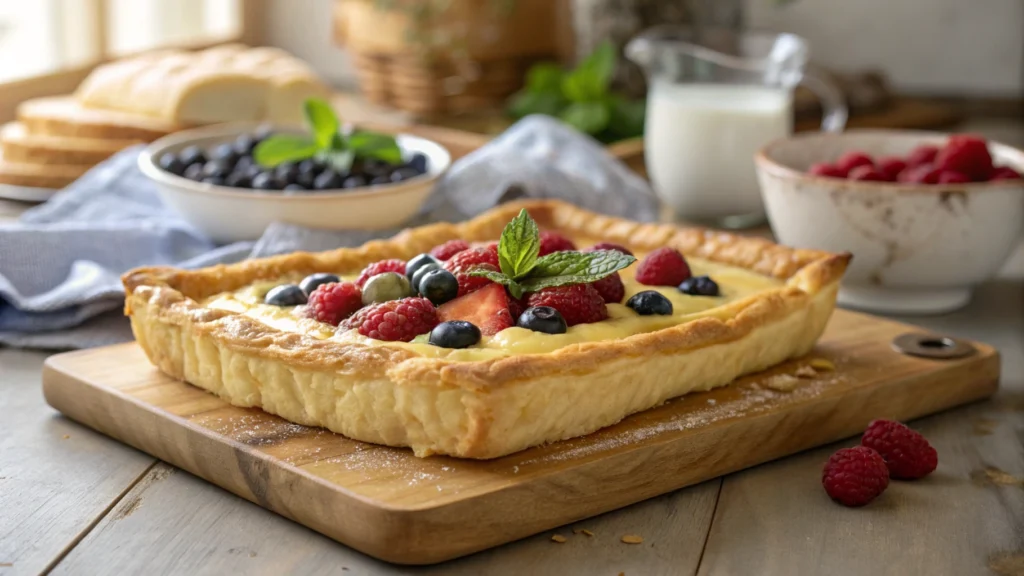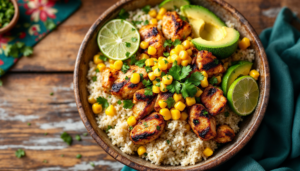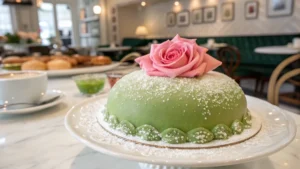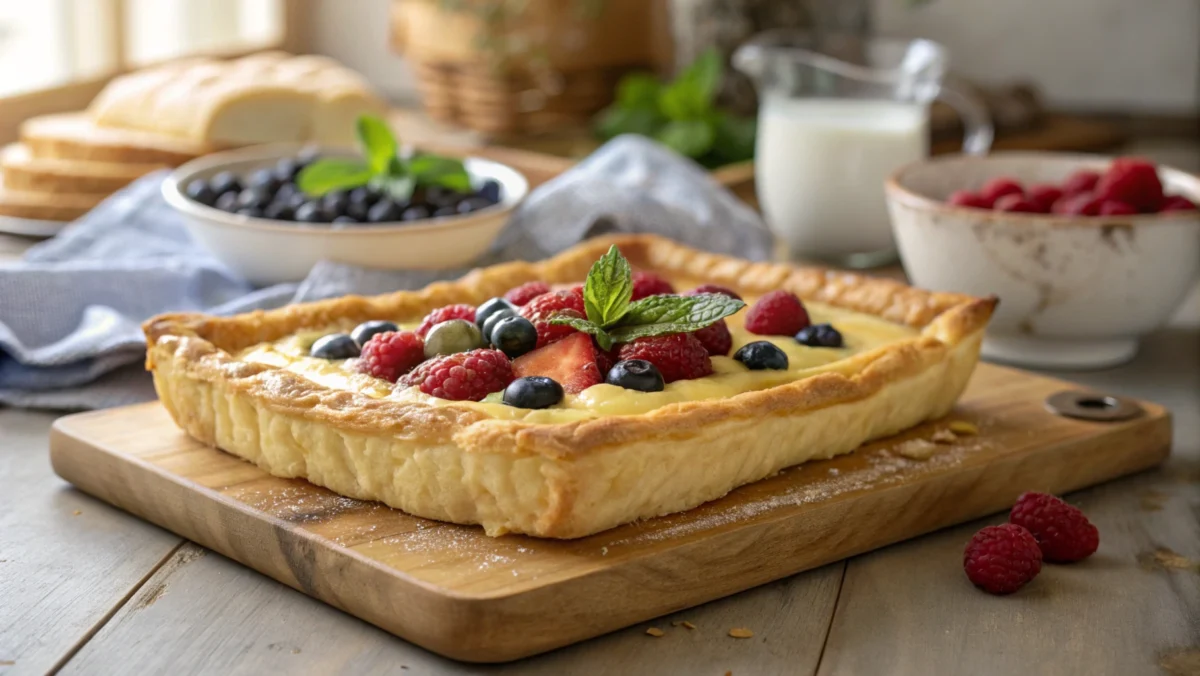
Introduction to Puff Pastry
Puff pastry is a marvel of culinary craftsmanship—flaky, buttery, and versatile enough to fit into both savory and sweet creations. But when it comes to filling puff pastry, the question arises: Should I bake puff pastry before filling it? This article dives into the details, exploring scenarios where pre-baking is essential, when it can be skipped, and the best techniques for success. By the end, you’ll know how to make puff pastry shine in any dish, whether it’s an elegant tart or a comforting pot pie.
What is Puff Pastry?
Puff pastry is a laminated dough made by alternating layers of butter and dough, which are folded and rolled multiple times to create its signature flaky texture. When baked, the butter layers steam, causing the dough to puff and separate into crisp, golden layers. It’s the base for a myriad of recipes, from appetizers to desserts.
Understanding the Basics of Baking Puff Pastry
Baking puff pastry is an art that hinges on achieving the perfect balance of crispness and tenderness. To do this, it’s crucial to understand when to bake the pastry before adding a filling and when it’s okay to bake it all together. Pre-baking, or blind baking, is often necessary to prevent the dreaded soggy bottom, especially in recipes with wet or liquid fillings.
Whether you’re making a fruit tart or a quiche, the key to success lies in knowing your recipe’s needs. Some fillings work best with a partially or fully pre-baked crust, while others thrive when baked simultaneously with the pastry. By mastering these techniques, you’ll create puff pastry dishes that look and taste like they came straight out of a professional bakery.
In the next section, we’ll explore why pre-baking puff pastry is often the preferred choice and how it can elevate your baking game.
Why You Might Pre-Bake Puff Pastry
Preventing Sogginess in Puff Pastry
One of the most common reasons to pre-bake puff pastry is to avoid sogginess. When you’re working with fillings that release moisture—like custards, fruits, or savory sauces—this step becomes crucial. The pastry acts as the base, but if it’s not properly cooked beforehand, it can absorb the liquid from the filling and turn unpleasantly doughy.
Pre-baking creates a barrier between the pastry and the filling by firming up the layers and ensuring the crust stays crisp and flaky. Think about dishes like fruit galettes or quiches—these rely on a sturdy base to complement the soft, flavorful filling. Without blind baking, the delicate texture of puff pastry can be lost.
Benefits of Blind Baking Puff Pastry Shells
Blind baking, as it’s often called, is a technique that involves baking the pastry partially or fully before adding the filling. Here’s why it’s beneficial:
- Enhanced Texture: Blind baking ensures the bottom layers bake evenly and puff up as they should.
- Professional Finish: Pre-baked pastry not only holds its shape better but also looks more polished and golden.
- Versatility: Once pre-baked, puff pastry shells can hold a variety of fillings without collapsing or becoming soggy.
To blind bake puff pastry, you’ll typically roll out the dough, line your baking dish, and prick the base with a fork to prevent bubbling. Some bakers use pie weights or parchment paper to keep the layers flat during baking.
Pre-baking isn’t just about practicality; it also opens up creative opportunities. From savory hors d’oeuvres to elegant dessert tarts, a crisp, pre-baked base can make all the difference in presentation and taste.
In the next section, we’ll explore the specific scenarios where pre-baking puff pastry is not just helpful—it’s absolutely necessary.
Situations Where Pre-Baking is Necessary
Recipes That Benefit from Pre-Baked Puff Pastry
Certain dishes require puff pastry to act as a sturdy foundation, making pre-baking a non-negotiable step. For example:
- Quiches and Savory Tarts: The egg-based filling in quiches can seep into unbaked pastry, leading to a soggy bottom. Pre-baking the shell ensures it stays crisp and supports the creamy filling.
- Fruit Tarts: Juicy fruits like berries, apples, or peaches release liquid during baking. A pre-baked base helps prevent the juices from soaking into the pastry.
- Cream-Filled Pastries: For desserts like éclairs or custard tarts, the filling is often added after baking. In this case, the pastry must be fully baked beforehand.
Pre-baking is essential for recipes that demand a light, flaky texture while accommodating a wet or delicate filling. Without it, the final dish can fall short of expectations.
Types of Fillings That Require Pre-Baked Crusts
Moisture is the main culprit behind soggy pastry, and certain fillings are especially prone to it. Consider these scenarios:
- Wet Ingredients: Ingredients like spinach, ricotta, or tomato-based sauces are best paired with a pre-baked puff pastry shell to maintain structure.
- No-Bake Fillings: Pastries that hold whipped cream, chocolate mousse, or chilled custards require a fully baked crust as they aren’t cooked further.
By pre-baking, you allow the pastry to develop its characteristic layers without interference from the filling. This ensures the texture remains crisp and the presentation is top-notch.
Up next, we’ll walk through a step-by-step guide to blind baking puff pastry, complete with tips to avoid common pitfalls and ensure success every time.
How to Pre-Bake Puff Pastry
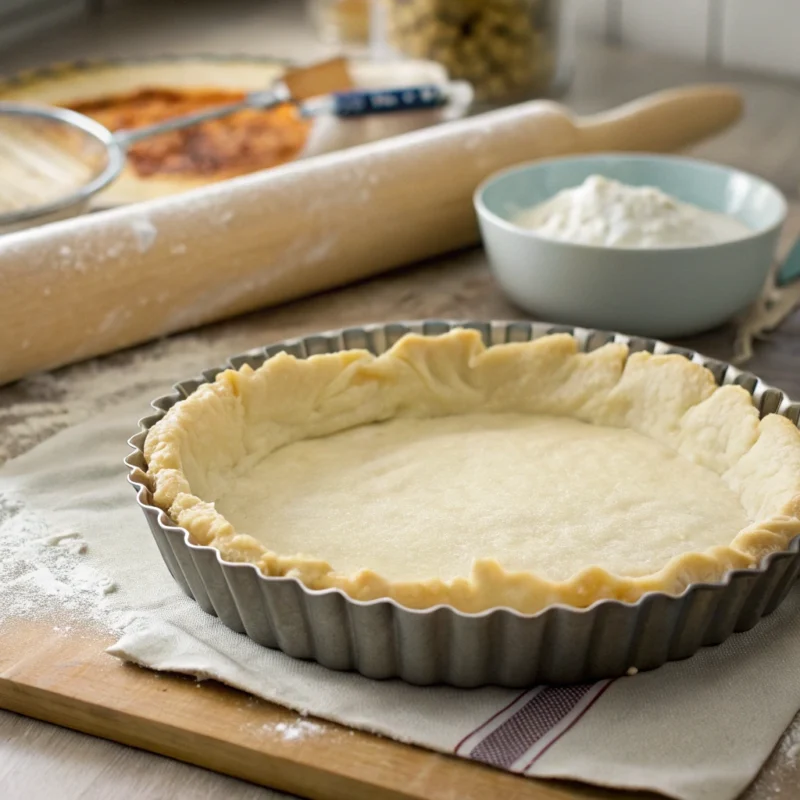
Step-by-Step Guide to Blind Baking
If you’ve ever wondered Should I bake puff pastry before filling it?, the answer often depends on the recipe. For those times when pre-baking is necessary, follow these steps to achieve a perfectly crisp and flaky base:
- Prepare the Pastry: Start by thawing your puff pastry according to the package instructions. Roll it out slightly on a floured surface to smooth the edges and fit your baking dish.
- Line the Dish: Gently press the pastry into the dish, ensuring it covers the base and sides evenly. Trim any overhanging edges for a neat finish.
- Dock the Pastry: Using a fork, prick holes across the base to prevent it from puffing excessively during baking.
- Add Weights: Line the pastry with parchment paper or aluminum foil and fill it with pie weights, dried beans, or rice. This step helps keep the base flat.
- Bake the Pastry: Place the prepared pastry in a preheated oven, typically at 375–400°F (190–200°C). Bake for 15–20 minutes, or until the edges begin to turn golden.
- Remove the Weights: Carefully take out the parchment paper and weights, then bake for an additional 5–10 minutes to ensure the base is cooked through.
Following this method guarantees a crisp foundation for your puff pastry dishes, whether they’re savory or sweet.
Common Mistakes and How to Avoid Them
Blind baking isn’t without its challenges. Here are some common pitfalls and tips to sidestep them:
- Overworking the Dough: Rolling out puff pastry too much can compress the layers and prevent proper puffing. Work gently for the best results.
- Skipping the Weights: Failing to use weights can result in an uneven base, with some parts puffing up excessively.
- Undercooking: If the pastry isn’t fully baked before adding the filling, it may turn soggy once the dish is complete. Always bake until golden and crisp.
For more inspiration and ideas, check out Easy Puff Pastry Dessert Recipes.
Next, we’ll explore how to successfully bake puff pastry without pre-baking, diving into the best fillings and techniques for success.
Filling Puff Pastry Without Pre-Baking
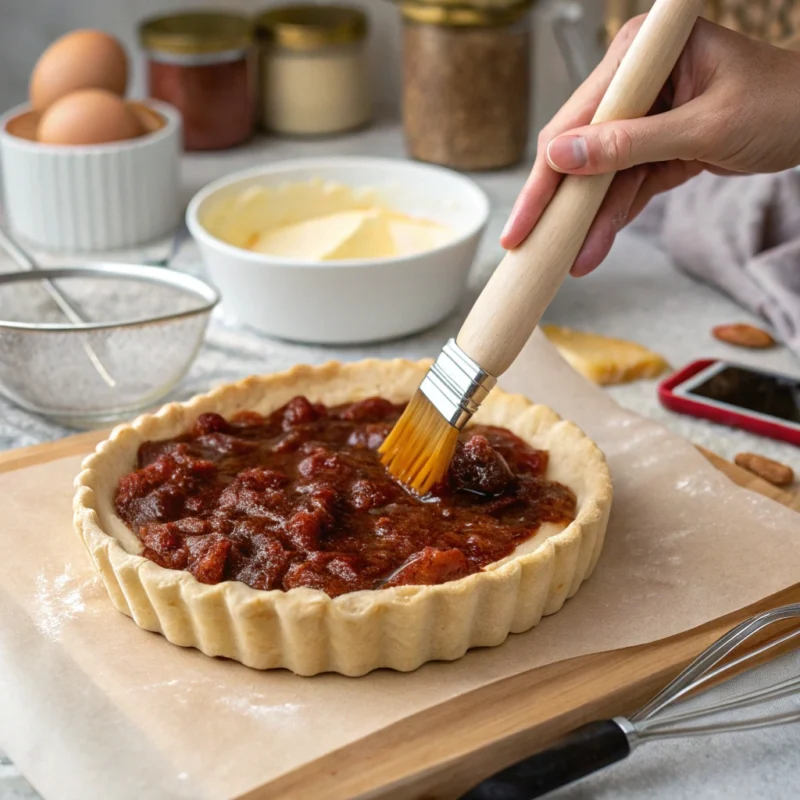
Types of Fillings Best Suited for Unbaked Pastry
While pre-baking is essential for some recipes, other dishes thrive when the filling and puff pastry bake together. These recipes typically feature thicker or less moisture-heavy fillings. Here are a few examples:
- Savory Pies and Turnovers: Fillings like seasoned ground meat, cheese, or sautéed vegetables are perfect for unbaked pastry. These ingredients release minimal liquid during cooking, ensuring the pastry stays crisp.
- Enclosed Dishes: Dishes like Beef Wellington or puff pastry-wrapped salmon benefit from the pastry and filling baking simultaneously. The steam from the filling enhances the puffing process without turning the pastry soggy.
- Sweet Hand Pies: Fruit-filled hand pies work well with raw puff pastry, provided the fruit is thickened with cornstarch or flour to minimize moisture.
When deciding Should I bake puff pastry before filling it?, consider the filling’s consistency. Thicker mixtures that hold their shape are less likely to compromise the pastry’s texture.
Techniques for Baking Puff Pastry with Filling
To bake puff pastry and filling together successfully, follow these tips:
- Chill Before Baking: Once assembled, refrigerate your filled pastry for 15–20 minutes. This helps the dough maintain its shape during baking.
- Seal the Edges: Use a beaten egg to seal the edges of your pastry tightly. This prevents filling leakage and ensures a clean bake.
- Ventilation is Key: For enclosed pastries, make small slits on top to allow steam to escape. This prevents soggy interiors.
- Brush with Egg Wash: A light coating of egg wash on the exterior enhances browning and creates a glossy finish.
- Monitor Baking Time: Bake at the recommended temperature—usually 375–400°F (190–200°C)—and check frequently to avoid over-browning.
By following these steps, you can create delicious puff pastry dishes that are golden, flaky, and perfectly cooked from the inside out.
Next, we’ll explore expert tips to help you master puff pastry and ensure your results are consistently outstanding.
Expert Tips for Perfect Puff Pastries
Achieving the Perfect Flaky Texture
Creating the perfect puff pastry involves more than just following recipes—it’s an art. To ensure consistently flaky, golden results, keep these expert tips in mind:
- Keep Everything Cold: Puff pastry relies on cold butter to create steam during baking. Always chill your dough, tools, and even your hands, if necessary.
- Avoid Overhandling: Too much handling can compress the delicate layers, leading to less rise. Work quickly and lightly when rolling or shaping.
- Use High-Quality Ingredients: Opt for real butter rather than margarine, as it provides superior flavor and texture.
Secrets to Avoiding Common Puff Pastry Problems
Even seasoned bakers encounter challenges with puff pastry. Here’s how to sidestep the most common issues:
- Preventing Shrinkage: Always chill your pastry after rolling and shaping to reduce shrinkage during baking.
- Ensuring Even Puffing: Dock the dough (prick with a fork) when necessary and use weights during pre-baking to achieve an even rise.
- Mastering Browning: An egg wash is the secret to a beautifully golden finish. Use a mixture of beaten egg and water or cream for the best results.
By applying these tips, you’ll elevate your puff pastry creations, making them bakery-worthy every time.
For more ideas and tricks, explore Easy Puff Pastry Dessert Recipes to expand your repertoire.
In the next section, we’ll address common questions about puff pastry, offering quick answers to help you tackle any baking challenge with confidence.
FAQs
Do I Need to Pre-Cook Puff Pastry Before Adding Filling?
Whether you need to pre-cook puff pastry depends on the recipe. For dishes with moist fillings like custards, quiches, or fruit tarts, blind baking is crucial to prevent sogginess. However, for thicker fillings or enclosed pastries like turnovers, pre-cooking the pastry isn’t necessary.
How Long Should I Blind Bake Puff Pastry?
Blind bake puff pastry for 15–20 minutes at 375–400°F (190–200°C). After removing the pie weights, bake for an additional 5–10 minutes until the base is golden and crisp.
Can You Fill Puff Pastry After Baking?
Yes, you can fill puff pastry after baking! This technique works well for cream puffs, custard tarts, or fruit-topped desserts. Ensure the pastry is fully cooled before adding the filling to maintain its texture.
Why Is My Puff Pastry Raw Inside?
Raw puff pastry is often the result of underbaking or using an oven that’s too cool. Always preheat your oven to the recommended temperature and bake until the pastry is golden and firm. Avoid overcrowding the pan, as this can affect heat circulation.
By addressing these FAQs, you’re well-equipped to master any puff pastry recipe with confidence!
Conclusion
Mastering the question Should I bake puff pastry before filling it? opens up a world of culinary possibilities. Whether you’re preparing a savory tart, a sweet hand pie, or an elegant dessert, understanding when and how to pre-bake puff pastry ensures the best results.
We’ve explored the nuances of pre-baking to prevent sogginess, techniques for working with unbaked pastry, and expert tips to achieve that perfect flaky texture. Additionally, by answering common FAQs, we’ve tackled common challenges, giving you the confidence to experiment and excel.
For those looking to expand their repertoire, don’t miss Easy Puff Pastry Dessert Recipes for creative inspiration. Armed with these tips and techniques, you’re ready to transform puff pastry into show-stopping dishes that impress every time.
Happy baking!
